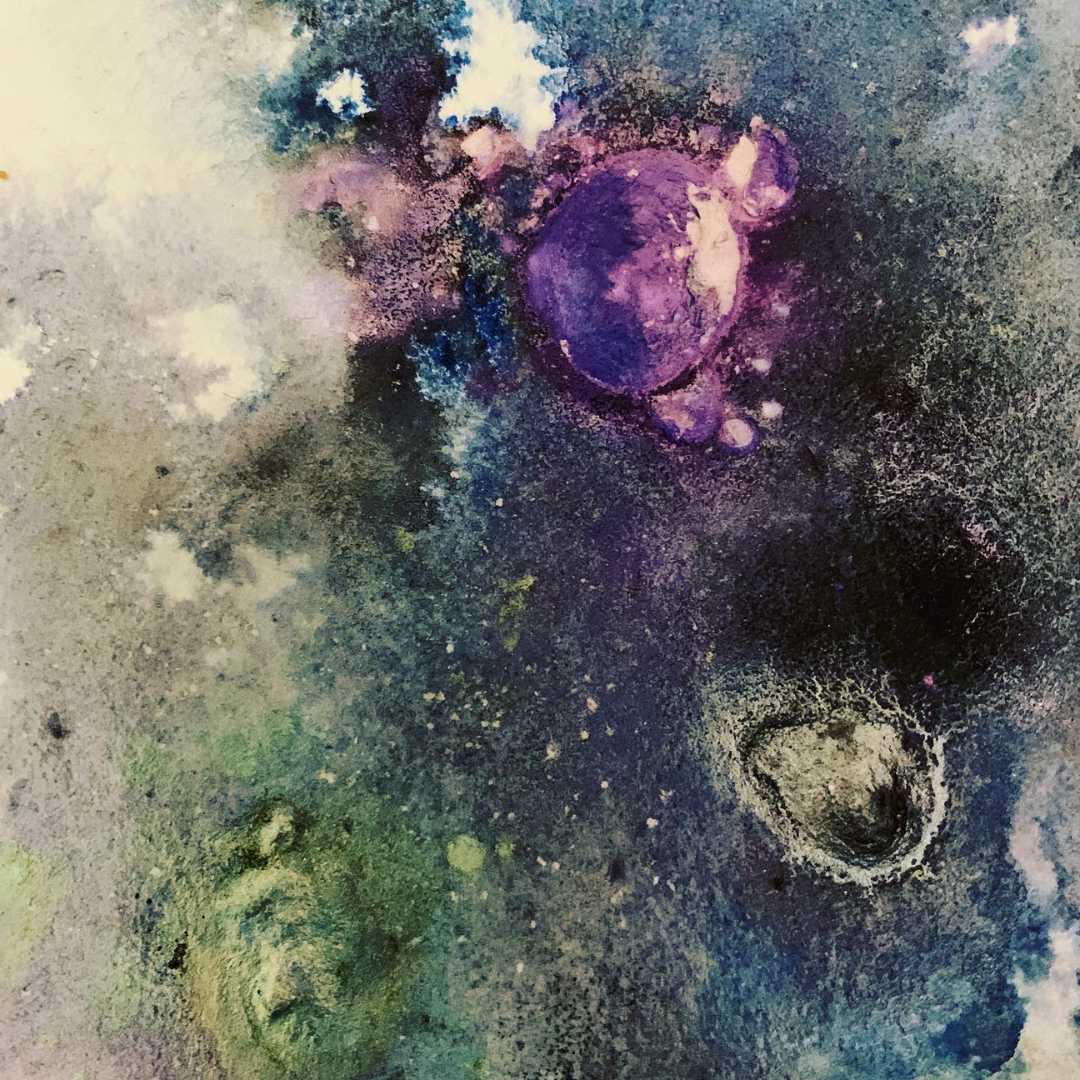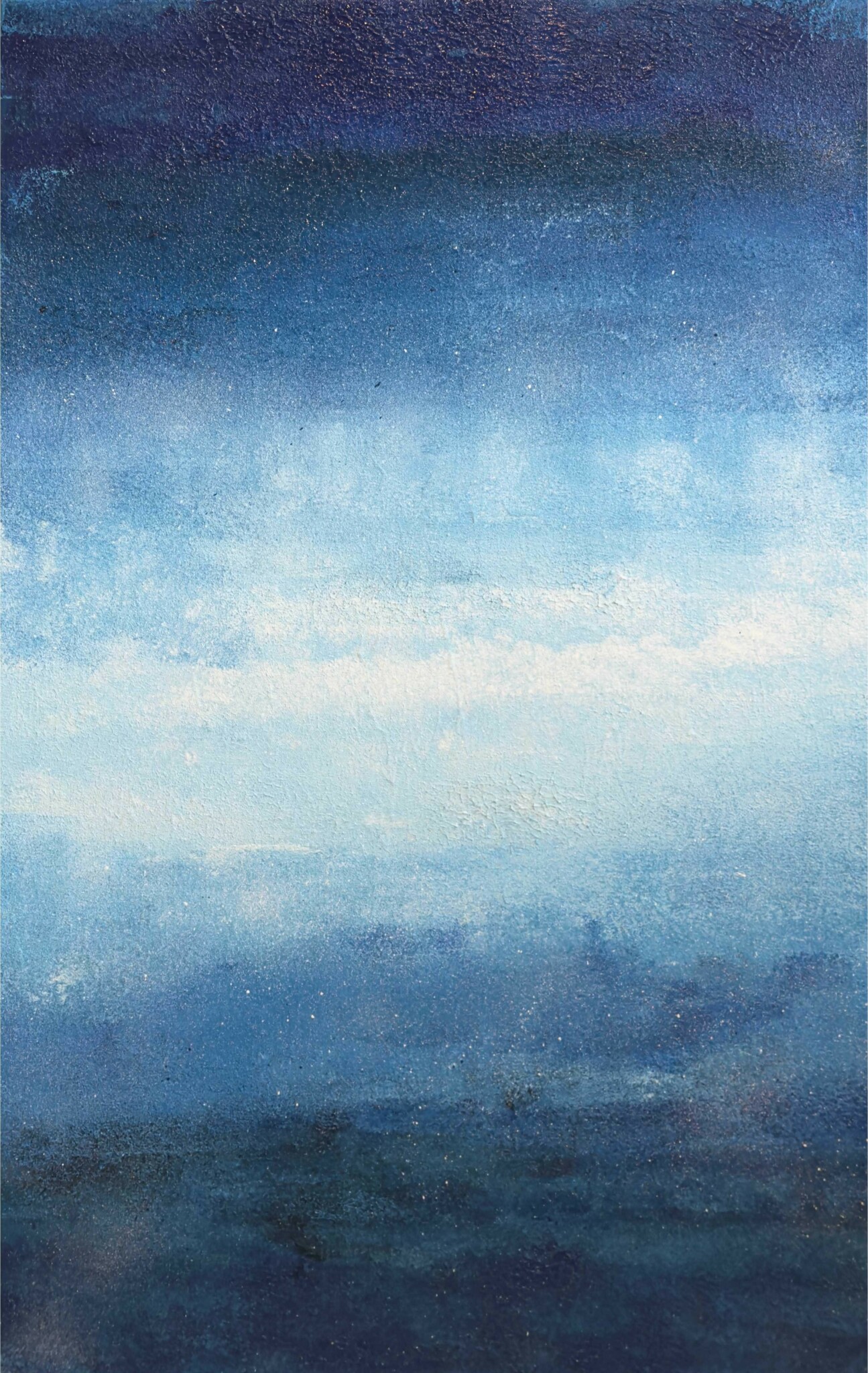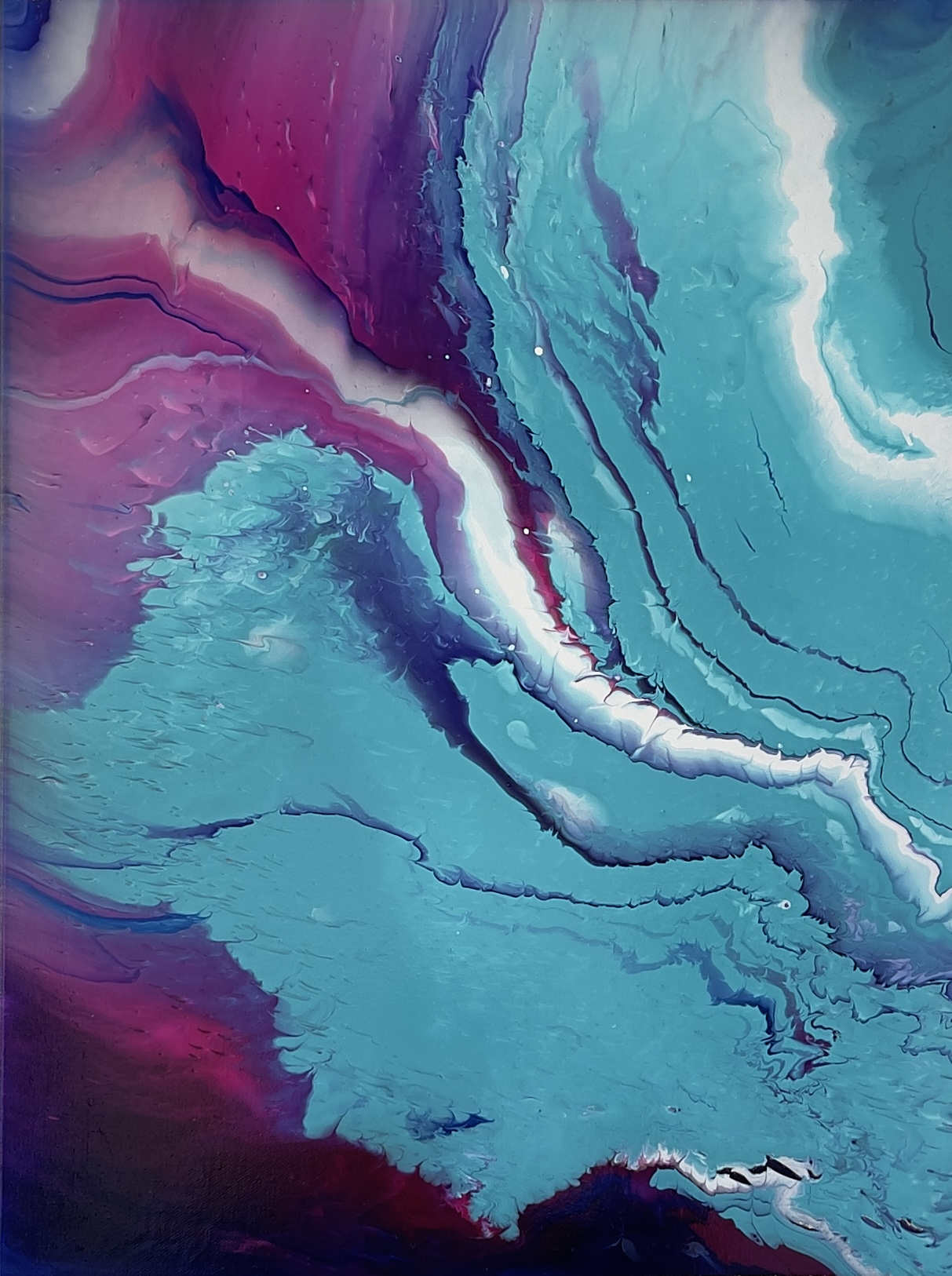We’re excited to introduce you to the always interesting and insightful Kristen Freitas. We hope you’ll enjoy our conversation with Kristen below.
Kristen , thanks for joining us, excited to have you contributing your stories and insights. Are you happy as a creative professional? Do you sometimes wonder what it would be like to work for someone else?
There are definitely moments when I wonder if life would be easier with a “regular job.” But being an artist and an arts advocate isn’t just what I do—it’s who I am. Still, the thought crosses my mind, especially when I’m feeling overwhelmed by everything I’ve taken on.
One of those moments happened during the lead-up to Kaleidoscope at Atlantic Works Gallery. I wasn’t just showing my work—I was transforming the entire space with light, sound, and installation. It was a massive undertaking, requiring so much energy, coordination, and problem-solving. At the same time, I was balancing being a mother, an active member of EBAG and AWG, and managing everything else that comes with life. I barely had time to catch my breath.
One late night at the gallery, I was exhausted, running on adrenaline and perhaps a bit of caffeine. I had been adjusting lighting, positioning sculptures, making sure every detail aligned with my vision. Then something went wrong— an issue with the sound equipment. Moments like these can make you wonder, Wouldn’t it be simpler to just clock in and out somewhere? To have clear boundaries, predictable hours, and not be responsible for everything?
But then, I stepped back and really looked at what I had created. Despite the exhaustion, I felt that familiar spark—the reason I do this in the first place. And at the opening reception, when people walked into the exhibit and I saw their reactions, I knew it was worth it. Watching them experience the space, seeing how they connected with my work, I was reminded that this is what I’m meant to do.
So yes, sometimes I wonder what it would be like to have a more traditional job. But the truth is, I wouldn’t trade this for anything. The challenges push me, but they also remind me of my purpose. And that’s what keeps me going.

Kristen , love having you share your insights with us. Before we ask you more questions, maybe you can take a moment to introduce yourself to our readers who might have missed our earlier conversations?
About Me:
My name is Kristen Freitas, and I am an artist, curator, and arts advocate dedicated to fostering creativity and building stronger artistic communities. My work is deeply rooted in the East Boston arts scene, where I have been actively involved for over a decade. Through my own artistic practice, my roles at Atlantic Works Gallery (AWG) and the East Boston Artists Group (EBAG), I strive to make art more accessible, engaging, and impactful.
How I Got Started
My journey as an artist took off when I joined AWG shortly after college in 2012. There, I found a creative home—one that encouraged exploration, collaboration, and artistic growth. Over the years, I’ve taken on various roles within the gallery, where I help shape the direction of our programming and support fellow artists. My commitment to the arts expanded further when I became a leading member of EBAG, an organization dedicated to connecting and uplifting artists in our community.
What I Create & The Problems I Solve
I specialize in immersive installations, acrylic pour paintings, and printmaking. My immersive installations transform spaces with light, sound, and sculpture, creating experiences that engage the senses and invite viewers to step into a different reality. My acrylic pour paintings are an exploration of color, form, and fluidity, embracing the unpredictable nature of the medium. In printmaking, I experiment with layers, textures, and techniques that allow for both precision and spontaneity.
Beyond my artistic practice, I work to solve a different kind of problem—helping artists gain visibility, access opportunities, and build stronger connections with one another and their community. My advocacy for an East Boston Cultural District is an extension of this work, as I believe that formal recognition will not only uplift local artists but also strengthen our neighborhood’s cultural identity and create economic opportunities for small businesses.
What Sets Me Apart
What makes me unique is my ability to bridge different aspects of the arts—creation, curation, and advocacy—while always prioritizing community engagement. Whether I’m designing an immersive installation, experimenting with new printmaking techniques, or organizing an event that brings artists together, my goal is to create meaningful experiences that connect people to creativity in new ways.
What I’m Most Proud Of
I am especially proud of my work in building platforms for other artists. Organizing Harboring Creativity with members of EBAG, a large-scale art event at ICA Watershed featuring over 40 local artists, was a milestone that reaffirmed my passion for creating opportunities in the arts. Additionally, Kaleidoscope, my recent exhibition at AWG, was a deeply personal achievement—an immersive experience that challenged me as an artist and allowed me to push the boundaries of my creative practice.
What I Want People to Know
For those just getting to know me, I want you to understand that my work is about more than just making art—it’s about fostering a thriving creative community. I believe that art should be accessible, engaging, and a tool for connection. Whether you are an artist looking for a space to share your work, a collector interested in diverse pieces, or someone who simply enjoys engaging with the arts, I welcome you to be part of this journey.
If you’re interested in experiencing my work, collaborating on a project, or supporting the East Boston arts community, I’d love to connect. Let’s continue building a creative future together.

Is there mission driving your creative journey?
My creative journey is driven by a deep commitment to making art accessible, engaging, and a catalyst for connection. Whether through my immersive installations, acrylic pour paintings, or printmaking, my goal is to create work that sparks curiosity, emotion, and conversation.
Beyond my own artistic practice, I am passionate about fostering a strong, supportive arts community—especially in East Boston. Through my roles at Atlantic Works Gallery (AWG) and the East Boston Artists Group (EBAG), as well as my advocacy for an East Boston Cultural District, I strive to create opportunities for artists to showcase their work, collaborate, and grow. I believe that art has the power to bring people together, shape our cultural identity, and revitalize communities, and that belief fuels everything I do.
Ultimately, my mission is twofold: to continue pushing my creative boundaries and to ensure that other artists have the space, support, and visibility to do the same.

In your view, what can society to do to best support artists, creatives and a thriving creative ecosystem?
Supporting artists and fostering a thriving creative ecosystem requires a multi-faceted approach that values the arts as an essential part of society. In my view, some of the most impactful ways to support artists and creatives include:
1. Providing Affordable Space
Artists need places to create, showcase, and collaborate. Access to affordable studio space, galleries, and performance venues is critical, yet rising rents and gentrification often push artists out of the very communities they help enrich. Cities and organizations can address this by offering subsidized artist spaces, repurposing underutilized buildings, and investing in cultural hubs.
2. Engaging With & Supporting Local Artists
One of the simplest but most powerful ways to support a thriving creative ecosystem is through direct engagement. Attend exhibitions, buy local artwork, commission projects, share artists’ work on social media, and participate in community events. When people actively support their local arts scene, they help sustain the artists who enrich our cultural landscape.
3. Funding & Grants for Artists
Financial stability is one of the biggest challenges artists face. Expanding grant programs, artist residencies, and direct funding opportunities allows creatives to focus on their work without constantly struggling for survival. More funding at the local, state, and national levels—particularly for emerging and independent artists—would go a long way in sustaining the creative community.
4. Prioritizing Arts Education
Early exposure to the arts fosters creativity and critical thinking, yet arts programs in schools are often the first to be cut. Ensuring that students have access to arts education, workshops, and mentorship programs not only benefits young artists but also cultivates a society that values creativity from an early age.
5. Recognizing the Economic Impact of the Arts
Art isn’t just a passion—it’s an economic driver. Creative industries generate billions of dollars and provide jobs across multiple sectors. Governments and businesses should recognize and invest in the arts as an essential contributor to local economies, tourism, and community development.
At the core of all of this is the idea that art should not be treated as an afterthought—it should be valued, protected, and nurtured. When society invests in the arts, it invests in innovation, cultural preservation, and the well-being of its communities.
Contact Info:
- Website: https://www.kristenfreitasart.com
- Instagram: https://www.instagram.com/kristenfreitasart




